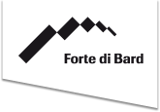From April 8th to June 19th, 2016 Fort of Bard, the main tourist and cultural centre of Valle d’Aosta Region will host the new project from the Italian artist Marco Del Re entitled Italian Mothers- The project is sponsored by Fort of Bard in collaboration with Galerie Maeght in Paris.
The exhibition presents a collection of plaster reliefs specifically created to be located in the Polveriera Restaurant of Bard Fortress. Italian mothers are the subjects of the compositions, prosperous female figures of Arcadian style, dams and protectors of the arts, which perfectly integrate between the slots, the gates and the vaults of the environment. A tribute to the cultural references loved by the artist, constantly reactualized through its multifaceted artistic practice: the Roman statuary, the Italian primitivism, the masters of the twentieth century avant-garde, with a focus on Henri Matisse, Georges Braque and Giorgio De Chirico. Today these great monochrome nudes, born from the synthesis between classical figurative tradition and modern painting, become an important presence for the guests of the fortress, representing conviviality and Italian art in an international forefront.
“To conceive a work of art for an already existing place or planning it is one of the most challenging experiences that an artist might live – Master Marco Del Re says -. The self-centeredness loved by creation gives way to the humble understanding of limits referring to the space to invest. This sense of limit will give life to another form of creativity molded on planned data. The work takes the measure of space and it perfectly inscribes in itself. ”
The exhibition integrates with permanent artistic interventions. The artist has designed and implemented the exhibition for the central space of the Polveriera. In the past it was used to deposit ammunitions and gunpowder, nowadays it offers a convivial atmosphere and it represents the dining room for visitors in the Fort.
Bowing to the constraints imposed by the already existing architecture, Del Re painted the ceiling of the central hall without losing his style, very well expressed at its highest level in the monumental proportions of painted plasters.
Close to the permanent installation, the plaster works decline further the archaic theme belonging to the indoor panels: bathers silhouette, still-lives of two -dimensional banquet, lovers and diabolic figures make up a theory of both alienating and fascinating presences, inexhaustible source to us about art and culture archetypes



